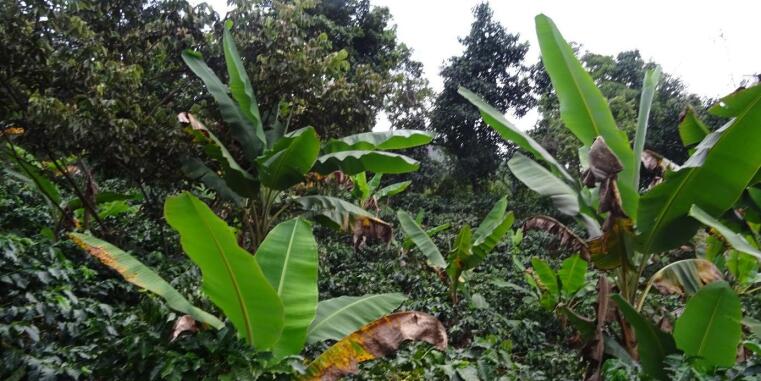

Project description
Agroforestry systems (AFS) are a land-use systems that combine agricultural crops with woody elements, usually trees, on the same piece of land. They have been implemented in various places around the world for decades or centuries. However, mono-cropping systems and specialization in few agricultural products have replaced these systems. In this course, native plant species have often been displaced by exotic plant species in several regions, both in tropical and temperate areas. This trend is considerably narrowing down the genetic resources of a number of plants and sometimes even endangering their existence. Furthermore, conversion of AFS to monocultures may lead to significant ecological problems as a result of habitat disruption and soil degradation which in the long term may lead to problems also for local human communities.
As an alternative to monocultures of trees or crops, agroforestry systems are integrated forms of land use that besides high production also have potential to reduce adverse environmental impacts, and to recover and maintain native species. However, beneficial effects for the environment may depend strongly on the types of species – either native or introduced – that are used in such systems. Thus the design and establishment of these systems with the cultivation of specific species must be carefully planned in order to ensure productivity, avoid high competition, to contribute to farmers’ income and to add benefits to the environment. If possible, it would be a benefit to reflect on the intra- and interrelations that are expected to happen between the different elements of the system.
Among the benefits from agroforestry systems that are widely described, in short, are improvement of soil quality, crop production, conservation of biodiversity and positive returns to farmers’ incomes. Findings from preliminary research on Ethnobotany carried out in Colombia (Cadena González et al., 2013) showed that a considerable number of native and multipurpose species are endangered to disappear and, simultaneously, traditional knowledge on plant use is also threatened (http://www.tropentag.de/2012/abstracts/posters/932.pdf, Cadena-González et al., 2013) Therefore, we decided to use AFS as a promising alternative to promote the cultivation and conservation of threatened species.
Although a number of studies and projects have analysed strategies of cultivation, structure and the role of species in agricultural systems, there is an urgent need for studies at local level that support small-scale and subsistence farmers in exchanging and improving knowledge on the design of their AFS. More specifically, there is the necessity among many subsistence farmers that local plans and studies support the improvement of knowledge on agro-ecological requirements of local plant species. Thus, these studies could strongly contribute to: (i) conservation of local native species, (ii) enhancement of productivity of agroforestry systems, (iii) resilience of food production and nutrition, (iv) mitigation of impacts of global warming and to the local economy.Objectives
The present project is focused on analysing factors that determine whether farmers do cultivate native species in agroforestry systems in the tropics and temperate regions. A part of this research is a case study carried out in the Eastern Andean range in Colombia, in the municipality of La Vega in the province of Cundinamarca. This case study aims at identifying local factors that influence farmers’ decisions to cultivate native species or not and, additionally, at studying the traditional structure that farmers currently give to their agroforestry systems. Based on this knowledge described by the farmers, it will be possible to do further research on the agro-ecological requirements of the cultivated plant species and to contribute with further knowledge to the farmers.
The municipality of La Vega comprises a wide elevational range between 1.100 – 2.700 meters and, consequently, a marked climatic gradient and a diverse geographical structure, which allows for cultivation of a high diversity crop products and tree species. In spite of the benign characteristics of the natural environment and high quality of soils, many local farmers, especially subsistence farmers, struggle to gain some income to support their families. This situation is becoming worse due to effects of climate change. Thus, farmers need support to ensure food production, to diversify their income sources. Further, effective programs are needed that motivate locals to look for options to improve and conserve local genetic material.Funding
The project does not count with a Sponsor yet and we are still looking for funding. The field-work in the Tropics was partly supported IN 2017 by the scholarship IP@WWU PhDs, promoted by the German Academic Exchange Service (DAAD) and funded by the Federal Ministry of Education and Research (BMBF).
Publications
There are no publications untill now.


